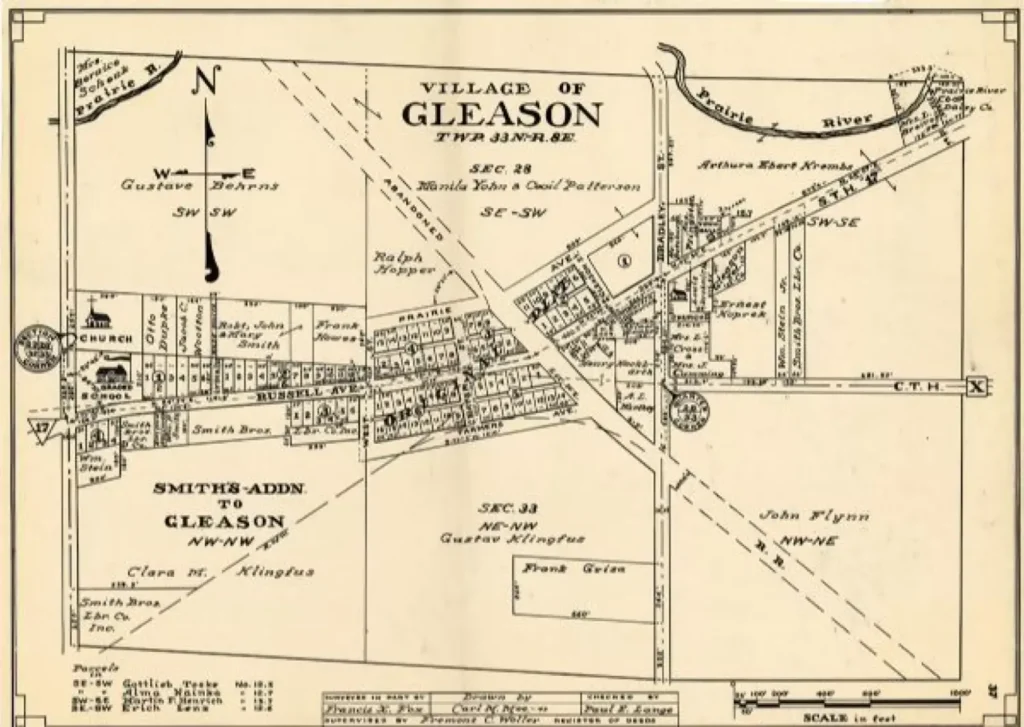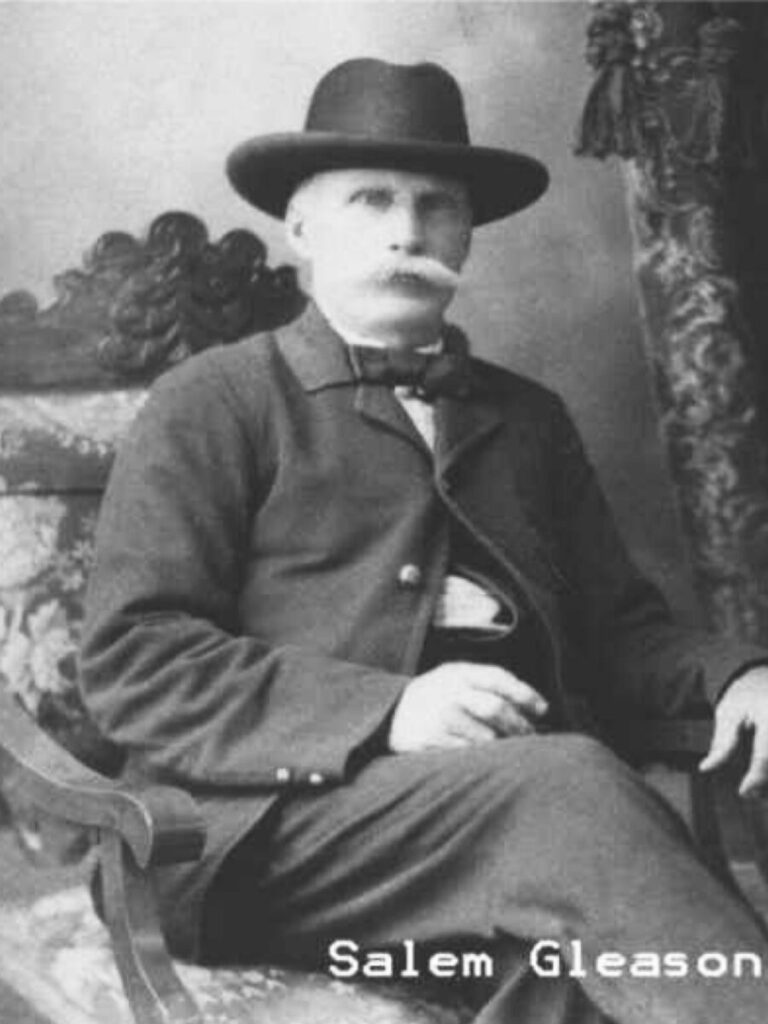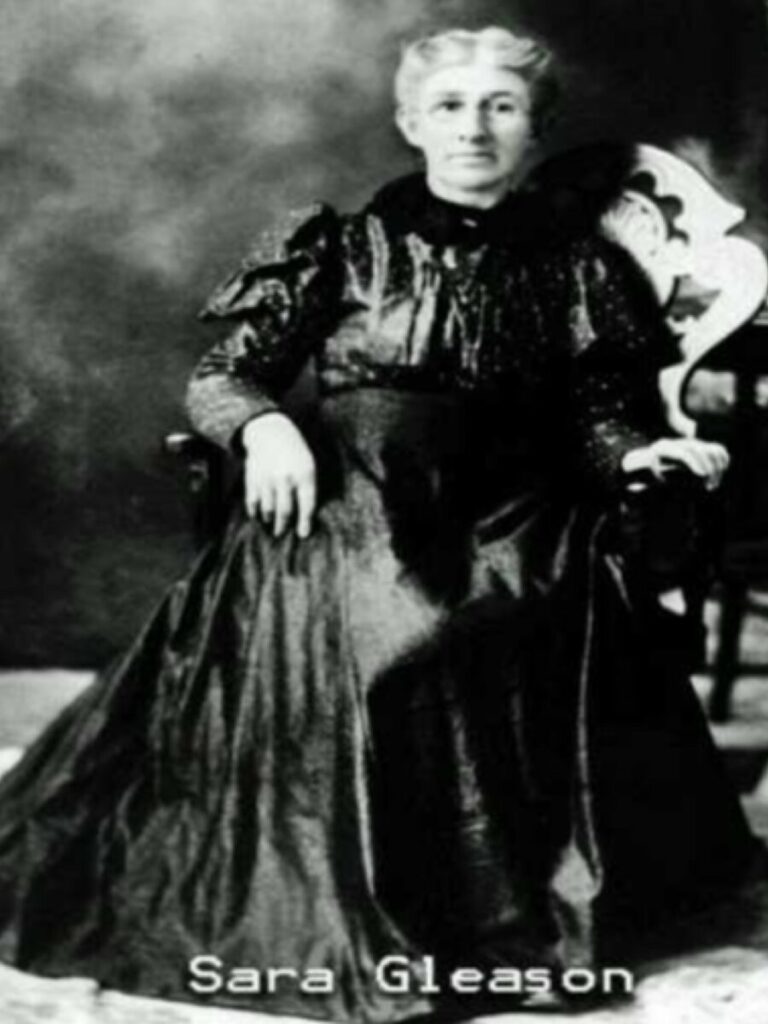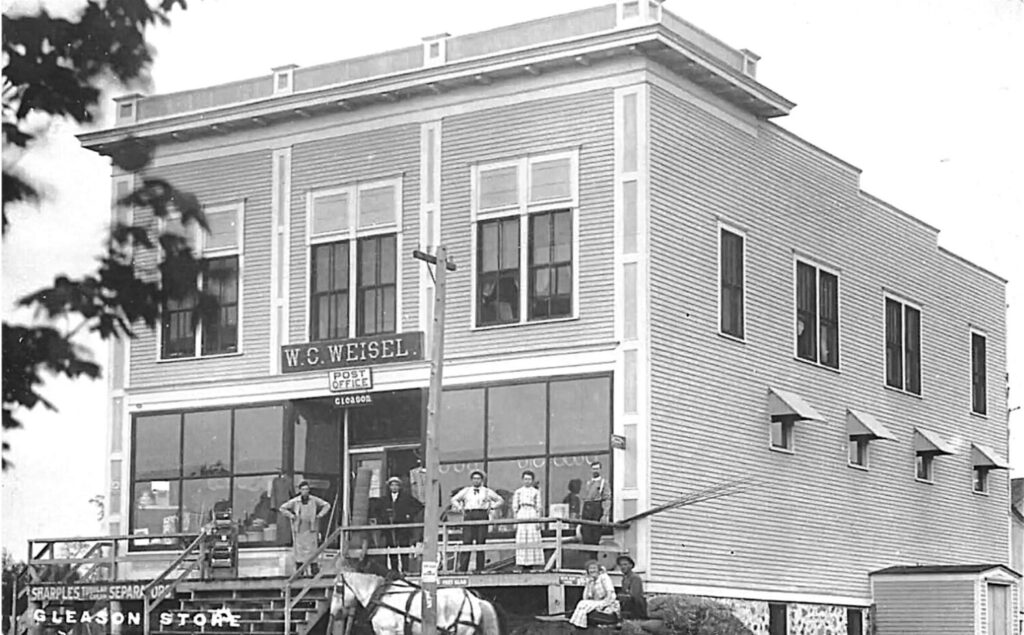
BY TINA L. SCOTT
EDITOR
Gleason, a small unincorporated Lincoln County town about 12 miles northeast of Merrill on Hwy. 17, was originally timbered virgin forest. In the late 1800’s, the land was sparsely settled, inhabited primarily by hunters, trappers, traders, and native Americans. In 1880, Salem and Sarah Gleason and their four children, Minnie, Emma, James, and Frank, traveled north via covered wagon pulled by oxen until they came to the Prairie River where they fell in love with the beautiful country and staked a 160-acre homestead claim. That land would later become the community of Gleason, named after these two homesteaders who were instrumental in the community’s development.


Salem was born in Ohio; raised in Rosendale, Wis.; and served in the Wisconsin Calvary in the Civil War. Sarah was born in New York and moved with her family to Stockbridge, Wis. The two married and moved to Minnesota to farm, but years of drought, grasshoppers, and blizzards brought them back to Wisconsin and family. After several years of renting, farming, and hearing about the beautiful land available to the north, the family set out together to make a new life. They staked their claim, and Salem and Sarah built a log home and a small barn near the Prairie River from the abundant supply of timber in the area. Two more children, Leona and Charles, were born.
Salem logged the land and hauled the logs to the river where they were floated down to Jenny (now Merrill) in the spring. Eventually a log schoolhouse was built and a sawmill was established. Salem and Sarah’s family outgrew their log cabin, and in 1890 Salem built an A-frame house with lumber cut from the logs, built nearer to the road.
Logging brought more men into the community, and as interest in the fledgling settlement grew, Salem sold some of his land to others to build.
E.A. [or C.A. (conflicting sources were found)] Berkman built a small general store in 1884 and more homes and businesses were built.

In 1897, Riverside Presbyterian Church at Gleason was organized by Rev. Brown, a Sunday School missionary from Marshfield, and Salem helped build that church. He and his family became members.
In 1901, the railroad connected to the settlement, prompting the establishment of a bank by W.H. Bradley of Tomahawk, and a post office was established in 1902. The community needed a name, and the names of Bradley and Gleason were bantered about, but ultimately the residents of the area selected the name of Gleason in honor of Salem and Sarah, upon whose original homestead the community was being developed. A site survey of the area was conducted at the direction of Salem Gleason, William P. Levia, Fred Beyer, Val Josten, Nettie Fellows, and the Farmers Lumber Co. (Edward Bradley, president). It was recorded on April 11, 1903. The survey map platted out Gleason as a town, with blocks and lots, streets and alleys. Other early settlers included the names and families of John Flynn, Andrew Bascomb, William Rice, and Robert Cumming.
On May 13, 1906, St. Pauls Evangelical Lutheran Congregation of Gleason was organized and formed by Edward Schmidt, George Gerbig, William Prueser, Otto Hintze, Karl Kegler, F. Beyer, and J. H. Gerbig. The congregation purchased two acres of land adjoining the premises of the existing Gleason Public School which included a house that served as a parsonage.
In 1911, the Smith Bros. sawmill (operated by William and Robert H. Smith) moved to the area from Dudley and continued to employ about two dozen men in season and to produce thousands of feet of lumber and lath for many years. The same owners also operated a large Deleo lighting plant which furnished electric light for part of the new village at that time. Sarah Gleason died in 1911.
A church building for St. Paul’s Evangelical Lutheran was dedicated on Dec. 22, 1912; a new parsonage would be built in 1919.
In 1914, the Gleason Telephone Company began as a co-operative, and a new schoolhouse was built.
The Estonian Evangelical Martin Luther Church, the first Estonian church built in America, is also located in rural Gleason. Some sources say the land was purchased in 1907 and the church finished/founded July 16, 1914. Though still standing and an important landmark, the building became the target of vandals over the years and is in need of many repairs. It is now privately owned and in need of volunteers and donations to facilitate restoration.
Salem Gleason, the community’s namesake, died in 1916.
Once logging had cleared the land, farms were established in the area and became the mainstay of the community rather than logging. By the early 1920’s, Gleason also had a blacksmith shop, the Gleason Mercantile Co.’s store, Gleason State Bank, an American Legion, and other active businesses serving the members of the small community.
Today, Gleason is home to a number of different and more modern businesses more appropriate to our time, as well as other churches and organizations.
The Merrill Foto News is dedicating a page in the first issue of the month to the Gleason community and will introduce readers to a good number of businesses and organizations in the Gleason area. We are excited to help all of our readers get to know more about our nearby neighbors to the northeast.
